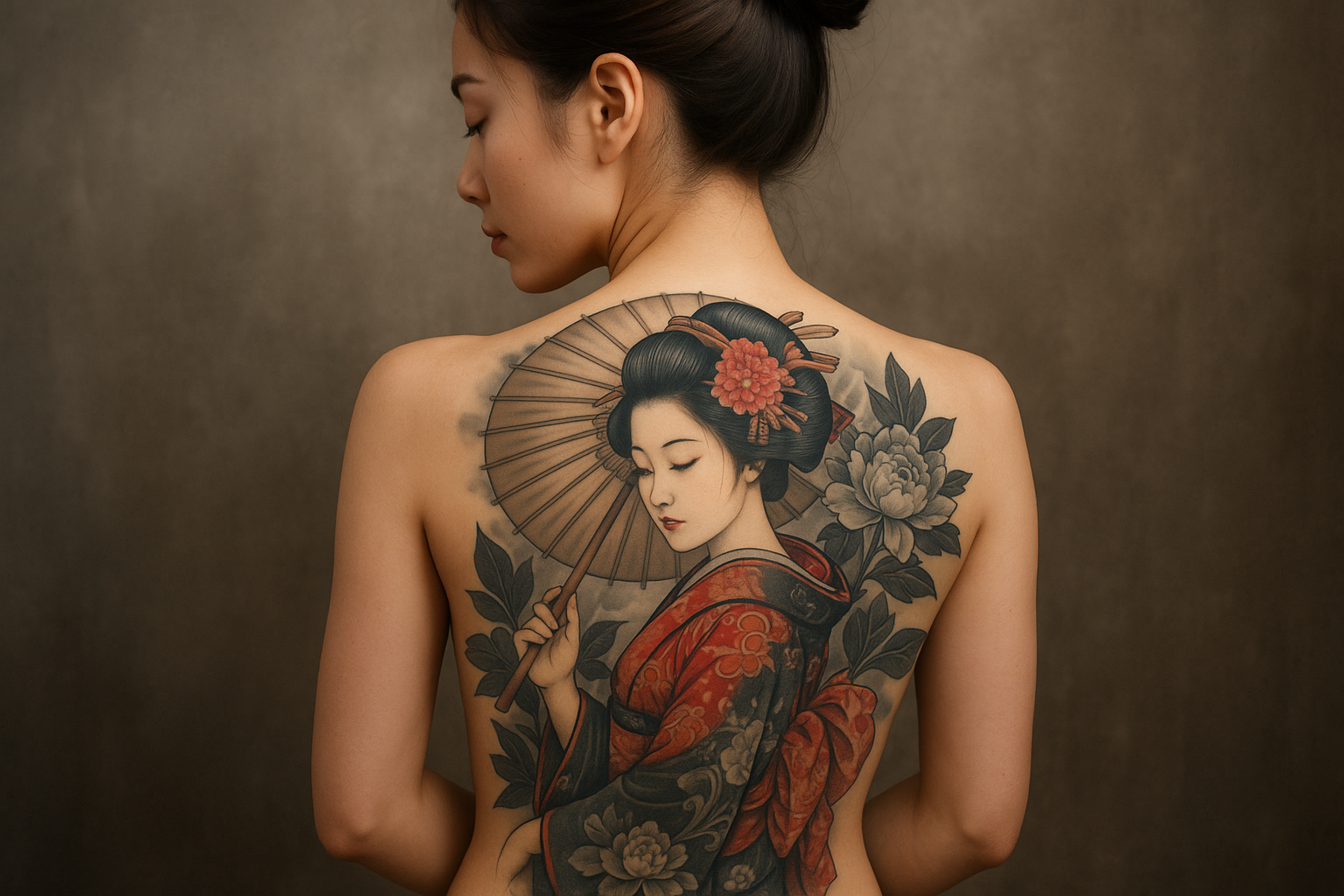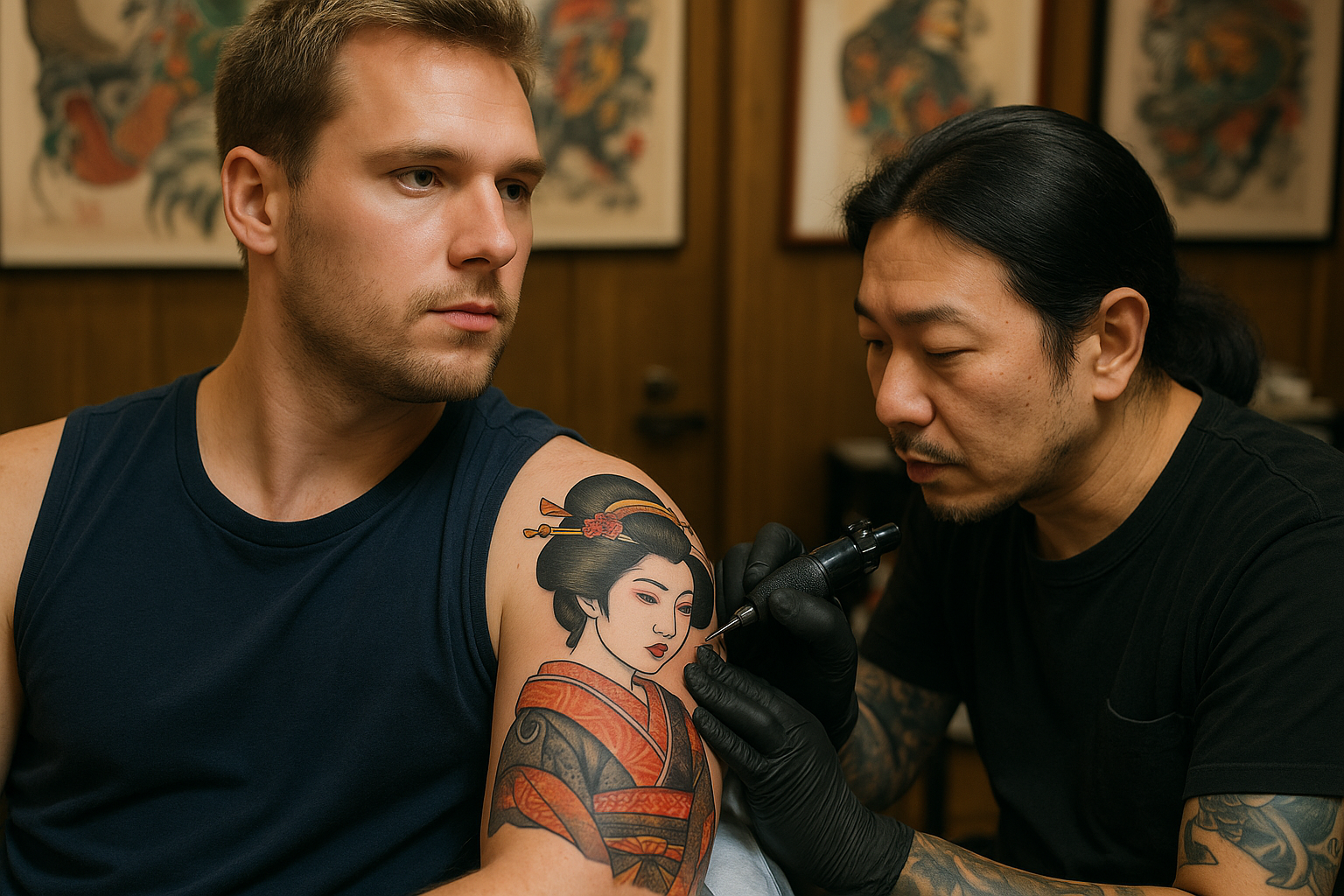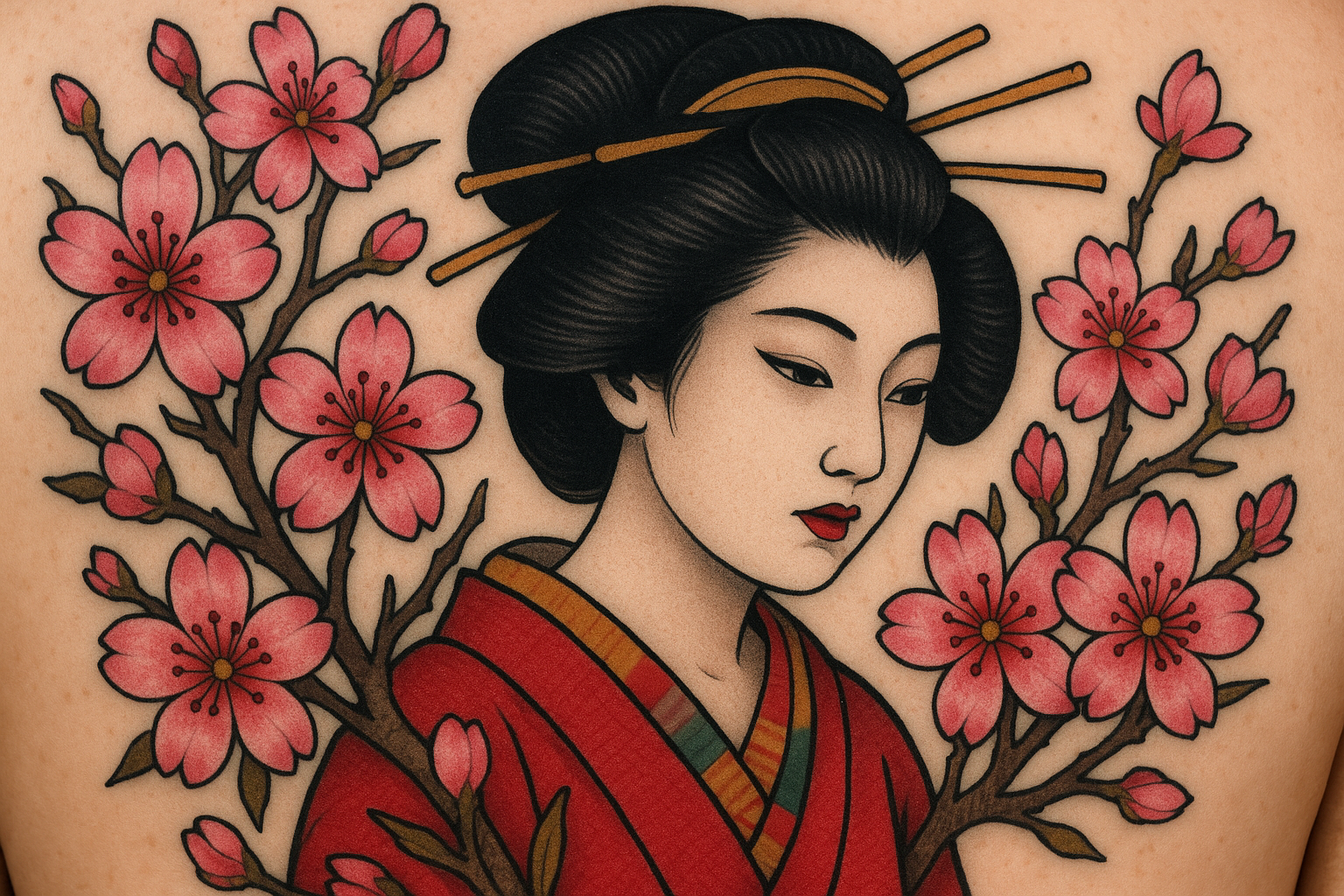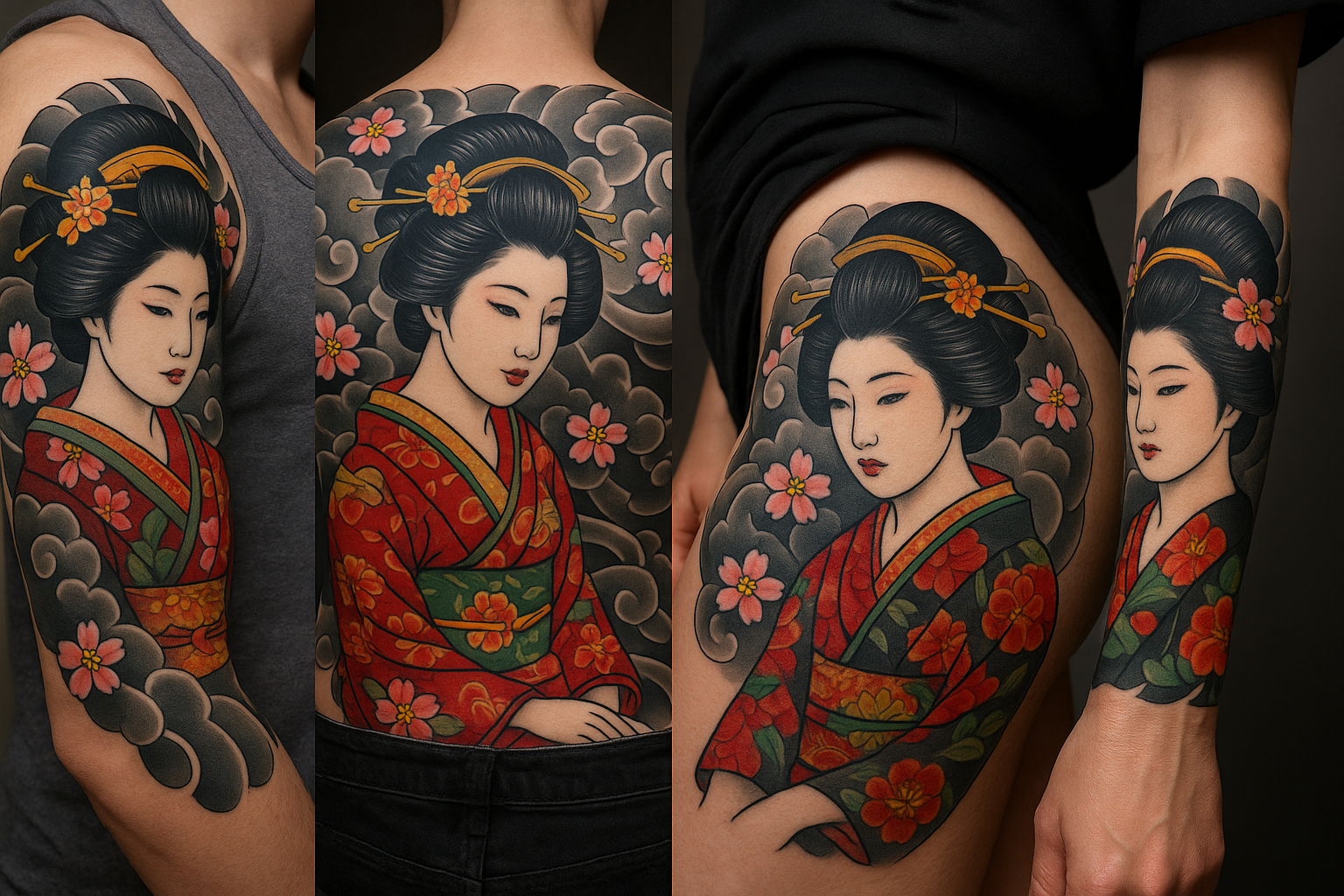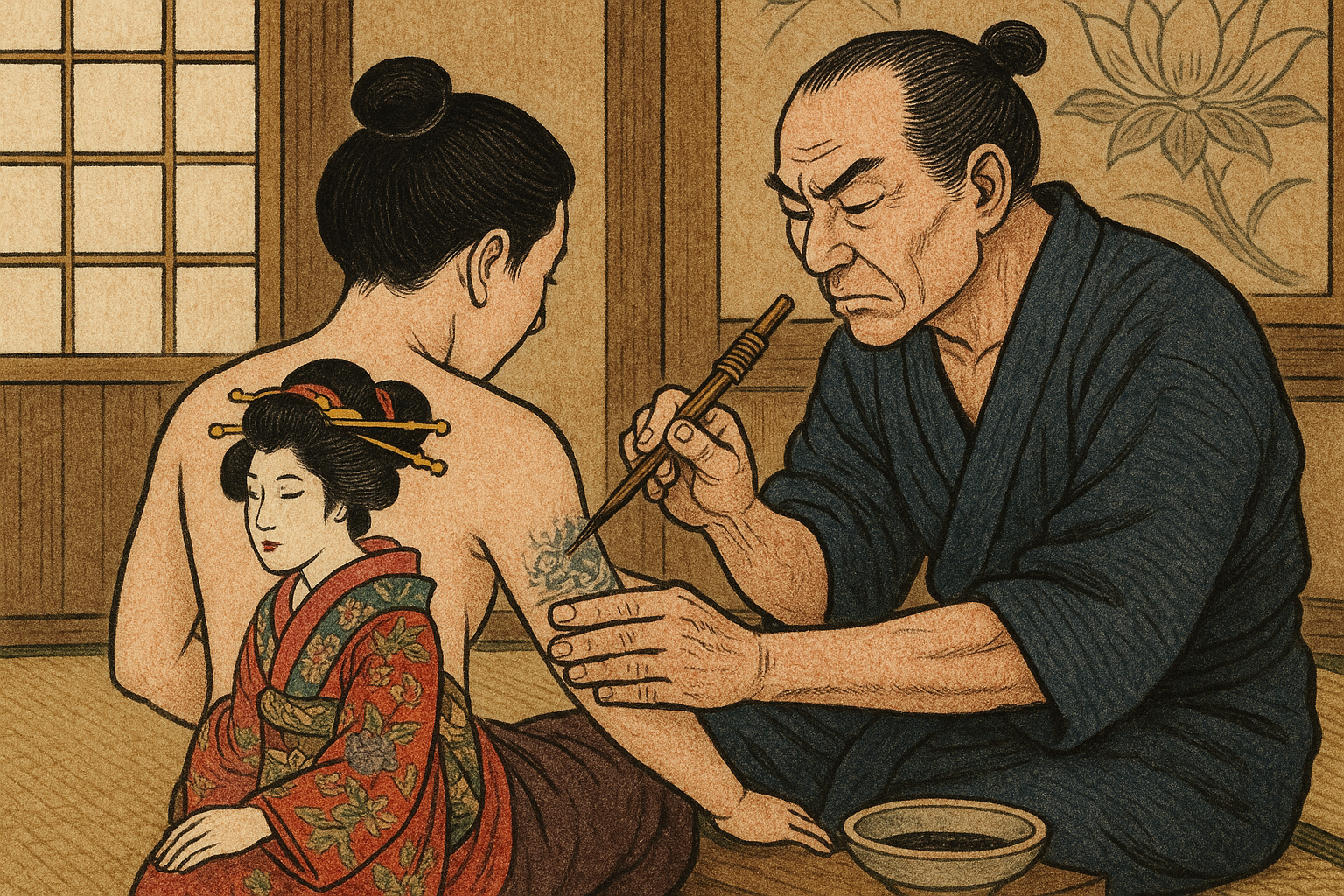Top 10 Geisha Back Tattoo Designs (And What They Say About You)
Choosing a geisha back tattoo is never just about beauty. It’s about projection, memory, power, and presence. The back is a sacred canvas in irezumi, where full stories unfold. When a geisha lives on your back, she becomes your shadow, your myth, your protector.
Below are ten powerful geisha back tattoo designs and what each one reveals about the person who chooses it.
1. Geisha in Full Dance with Cherry Blossoms Falling
What It Says: You see life as performance, pain as art, and beauty as fleeting. You carry grace through every fall. Symbolism: Impermanence, emotional endurance, elegance under pressure.
2. Geisha with Fan Covering Her Lips
What It Says: You don’t reveal yourself easily. You speak in presence, not noise. You understand power in silence. Symbolism: Mystery, restraint, and the right to withhold truth.
3. Geisha Facing Away, Kimono Sliding Off One Shoulder
What It Says: You are intimate with transformation. You’ve been undone before, but wear the unraveling with pride. Symbolism: Vulnerability, sensual awakening, rebirth.
4. Geisha with Dragon Wrapping Around Her
What It Says: Your softness is a choice. Beneath your beauty lies fire. You are both muse and weapon. Symbolism: Feminine power paired with elemental force; balance of yin and yang.
5. Geisha with Koi Fish at Her Feet
What It Says: You walk upstream. Your grace was earned. You are loyal, enduring, and unshakable. Symbolism: Perseverance, transformation, legacy.
6. Geisha with Lantern and Windblown Kimono
What It Says: You are a guide in the dark, a keeper of ancestral light. You walk between realms. Symbolism: Spiritual awareness, ancestral connection, illumination through ritual.
7. Geisha Holding a Broken Parasol in the Rain
What It Says: You don’t pretend you haven’t suffered. You carry your story in the open, dignified and soaked. Symbolism: Melancholy, truth-telling, survival with beauty intact.
8. Geisha Masked, Half-Shadowed
What It Says: You know the danger of being seen. You protect your truth behind curated identity. Symbolism: Duality, protection, trauma wisdom, emotional armor.
9. Geisha Amid Peonies, Hair Flowing Wild
What It Says: You no longer perform. You bloom on your own terms. Your beauty doesn’t ask permission. Symbolism: Liberation, self-reclamation, fierce grace.
10. Geisha Standing in Front of a Temple Gate
What It Says: You are sacred. You protect the line between the mundane and the divine. You are ritual in motion. Symbolism: Inner sanctuary, protection, spiritual initiation.
Final Thought: She Walks With You
When you wear a geisha across your back, you carry more than an image. You carry a philosophy. A woman who never asked to be defined. A whisper that reshaped the world.
Whatever version you choose, let her echo your truth.

